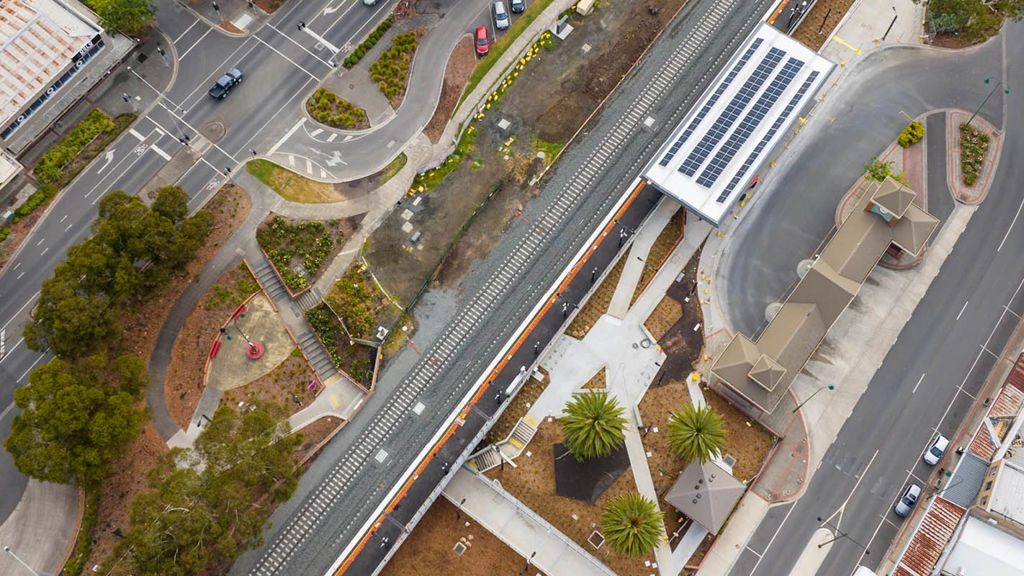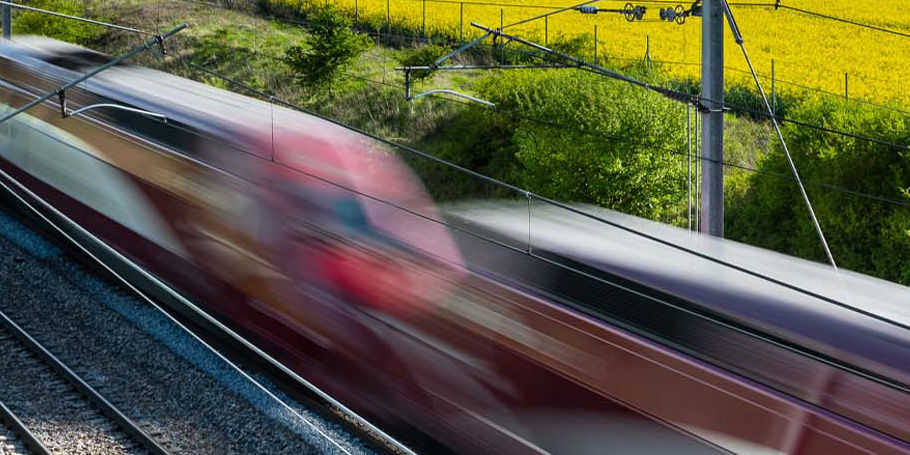Improving connectivity and accessibility to public transit in the Greater Toronto Area
Eglinton Crosstown West Extension

The project, an historic investment by the provincial and federal governments in infrastructure and transit expansion in the Greater Toronto Area, is being delivered with Metrolinx and Infrastructure Ontario.
The line will operate mainly underground, with an elevated guideway that will cross the Humber River. Seven new stations, four underground, two elevated, and one open-cut (built in a trench), will also be constructed.
The 9.2km extension will connect with the Mississauga Transitway and other local and regional transit, including the Union Pearson (UP) Express, Kitchener GO trains and GO Transit, Toronto Transit Commission (TTC), and MiWay buses bringing better connections to the Greater Toronto Area. Construction on the Eglinton Crosstown West Extension is currently underway. Plans are also being explored with the Greater Toronto Airports Authority to extend the line to Toronto Pearson International Airport.
Arup is leading the technical advisory team providing architecture, engineering, and other services to prepare reference concept designs and project-specific output specifications; supporting preparation of design build and progressive design build procurement documents and providing in-market procurement support; and conducting design, safety, quality, environmental, and construction compliance oversight to deliver the extension. Arup is also working on concept designs and environmental studies for the future extension of the line to the airport and evaluated expansion of an existing maintenance and storage facility (MSF) and additional locations for it.
Once completed, the line will improve transit accessibility for thousands of residents, reduce daily commutes, spur local economic growth, and considerably reduce greenhouse gas emissions by providing an alternative transportation option.
The new line is expected to bring 37,500 more people within walking distance of transit — almost 5,000 of whom are considered low-income. With improved access to transit also comes economic benefits, including putting 23,600 more jobs in walking distance of transit. When the extension is complete, Line 5 will stretch from Scarborough in the east, through midtown Toronto, and west into Mississauga.
The extension is projected to see up to 69,700 passengers daily, contributing to up to 6.5 million fewer car trips annually when combined with the Eglinton Crosstown LRT, and a reduction of up to 5,800 tonnes of greenhouse gas emissions annually.
Sustainability and climate change resilience consulting
As Technical Advisor, Arup is responsible for providing sustainability consulting, greenhouse gas accounting, and climate change resilience consulting and has prioritized the project’s environmental effects throughout the design development process. For example, the elevated guideway portion of the line is designed to minimize impact to the Eglinton Flats and Humber River Valley natural areas between the line’s Jane and Scarlett stations. This section also crosses a flood plain, and as extreme weather events continue to increase in severity, the elevated line will make travel safer and more reliable.
Arup is taking a holistic approach to address ecological preservation, energy minimization, materials selection, and thermal comfort to work toward the project’s Envision Gold-level certification. This includes an analysis of the project’s whole lifecycle carbon which accounts for capital, operational, and user carbon. Arup also recommended mitigation measures ranging from low carbon material to the introduction of circular economy principles, and together with partners DTAH and Dillon, developed a restoration plan and design the length of the extension to rewild urbanized areas, enhance native vegetation and to create a “green spine” connecting urban parks. The plan integrates feedback from local community, municipal, and Indigenous stakeholders resulting in a holistic restoration design that incorporates innovative concepts like rail gardens to improve water quality and maintain water balance in an ecologically sensitive area.
Assessing climate risks and digital interfaces
Due to increasingly frequent, long and severe heat, precipitation and other weather, Arup is also assessing climate risks to facilitate resiliency. Passengers’ thermal comfort, or satisfaction with the temperature in stations, is a priority so passive ventilation is being integrated into the station design and strategies devised to reduce heat and urban heat island effects. Arup uses digital interfaces and iterative design to recommend innovative, practical and effective climate resiliency solutions — offering a roadmap for the project to become a leader in sustainable rail infrastructure.
Improving collaboration and data visualization
Arup uses its Fuse platform, an advanced digital solution to improve collaboration between key stakeholders and to visualize and better manage the copious amounts of project-related information that large infrastructure projects like this one generate. It is a robust and reliable digital tool for monitoring project progress and facilitates coordination of a large interdisciplinary team. Arup’s site monitoring dashboard enables field engineers to update the database in real time, while stakeholders and designers can use Fuse to monitor project data and receive quick onsite activity updates.
By combining multiple web apps into one, Fuse acts as the single source of information for project data. Centralized information on mapping, topographical and design information is updated automatically on a web-based map. These tools provide visuals that are easy to understand and allow teams to make informed decisions.
What we delivered
-
Providing architecture, engineering, and other services to prepare reference concept designs and project-specific output specifications
-
Supporting preparation of design build and progressive design build procurement documents and providing in-market procurement support transportation option.
-
Conducting design, safety, quality, environmental, and construction compliance oversight to deliver the extension.
Get in touch with our team
Projects
Explore more commuter and mainline rail projects

Connecting communities across the Ellenbrook Line
Morley-Ellenbrook Line Project, Australia

Preserving Brunel’s iconic railway for future generations
Parson's Tunnel Rockfall Shelter, United Kingdom

Transforming transit in one of the largest metropolitan areas in North America
GO Expansion – On-Corridor Works (OnCorr), Canada

Enriching the rail experience for regional Victoria
Gippsland Line Upgrade, Australia
Get in touch with us
If you'd like to speak to one of our rail experts about any of the issues raised on this page or a potential collaboration then please get in touch by completing the form.

